“Tim Stepich: At this point in time, the state of the industry that it is right now, you should come up with a business plan. It doesn’t need to be something formal like what a business school would ask you to do. I remember hearing how the rock and roll band Black Sabbath became Black Sabbath. They saw the lines outside of theaters that were showing horror movies, and they said, what if we bring that experience to rock and roll? And that was their business plan. That’s how they were able to sustain their careers.”
~Tim Stepich
TV and movie editor, Tim Stepich, was captivated by the films and TV shows of his youth in the 1970s. By the time he was in high school, he set his sights on working in show business. Tim’s abiding interest in editing goes back to when, as a teen, he’d make music montages on his home stereo.
He studied television and film at Emerson College in Boston, where he worked in all aspects of film and video production but enjoyed editing the most. A few years later, Tim made his move to Hollywood with the goal of turning editing into his specialty.
Within a year he got his first editing job and ever since has worked in various genres, including episodic TV, commercials, and music videos.
He edited his first short film, Hate *a Comedy, directed by Drew Daywalt and Dave Schneider, which was a huge success on the festival circuit.
Tim’s feature credits include the critically acclaimed Happy Holidays, and the multi-award-winning black comedy horror film, Lucky, directed by some guy named Steve Cuden. For the record, because of working together on the complex edit of Lucky, Tim and I have been friends for more than 20 years.
Tim had a long and satisfying “day job” working for E! Entertainment Television, editing episodes of the iconic True Hollywood Story, and Wild On. He currently edits for the syndicated entertainment news show Access Hollywood.
WEBSITES:
TIM STEPICH MOVIES:
IF YOU LIKED THIS EPISODE, YOU MAY ALSO ENJOY:
- Paul Chitlik, Writer-Producer-Director-Teacher-Episode #312
- Ryan Raddatz, Actor-TV Writer-Producer-Episode #310
- Dan Mirvish, Filmmaker and Author-Episode #309
- Doug Pray, Documentary Film Director-Episode #306
- Maria Baltazzi, TV Producer-Teacher-Author-Episode #297
- Charles Rosenay, Actor-Author-Promoter-Session 2-Episode #289
- Richard Bakewell, Writer-Director-Cinematographer-Episode #282
- Chris Moore, Movie and TV Producer-Session 3-Episode #195
- Michael Emanuel, Actor-Producer-Writer-Director-Episode #176
- Jeff Werner, Feature and Documentary Director and Editor-Episode #142
- Fred Rubin, Television Writer-Producer-Episode #130
- Byron Werner, Cinematographer-Episode #128
- Hawk Koch, Legendary Movie Producer-Episode #101
- Chris Moore, Film and TV Producer-Episode #94
- Charles Rosenay, Actor-Author-Promoter-Episode #19
Steve Cuden: On today’s StoryBeat:
Tim Stepich: At this point in time, the state of the industry that it is right now, you should come up with a business plan. It doesn’t need to be something formal like what a business school would ask you to do. But when I’m talking a business plan, I remember hearing how the rock and roll band Black Sabbath became Black Sabbath. They saw the lines outside of theaters that were showing horror movies, and they said, what if we bring that experience to rock and roll? And that was their business plan. That’s how they were able to sustain their careers.
Announcer: This is StoryBeat with Steve Cuden, a podcast for the creative mind. Story Beat explores how masters of creativity develop and produce brilliant works that people everywhere love and admire. So join us as we discover how talented creators find success in the worlds of imagination and Entertainment. Here now is your host, Steve Cuden.
Steve Cuden: Thanks for joining us on StoryBeat. We’re coming to you from the Steel City, Pittsburgh, Pennsylvania. My guest today, tv and movie editor Tim Stepich, was captivated by the films and tv shows of his youth in the 1970s. By the time he was in high school, he set his sights on working in show business. Tim’s abiding interest in editing goes back to when, as a teen, he’d make music montages on his home stereo. He studied television and Film at Emerson College in Boston, where he worked in all aspects of Film and video production, but enjoyed editing the most. A few years later, Tim made his move to Hollywood with the goal of turning editing into his specialty. Within a year, he got his first editing job and ever since has worked in various genres, including episodic tv commercials and music videos. He edited his first short Film, a comedy directed by Drew Daywalt and Dave Schneider, which was a huge success on the festival circuit. Tim’s feature credits include the critically acclaimed Happy Holidays and the multi award winning black comedy horror Film Lucky, directed by some guy named Steve Cuden. For the record, because of working together on the complex edit of Lucky, Tim and I have been friends for more than 20 years. Tim had a long and satisfying day job working for E. Entertainment television, editing episodes of the iconic true Hollywood story and Wild on. He currently edits for the syndicated Entertainment news show Access Hollywood. So for all those reasons and many more, it’s a particularly great joy for me to have my friend, the incredibly gifted editor Tim Stepich, as my guest on StoryBeat today. Tim, welcome to the show.
Tim Stepich: Hi Steve. Thank you.
Steve Cuden: It’s a great pleasure to have you here. I’ve been wanting to have you on the show for some time, and I’m glad we’re doing it now. So let’s go back in time just a little bit. We know that you were very interested in movies and tv when you were a kid. But what were those movies and tv shows that really first attracted you? What did you watch as a kid? And that you started to notice editing as something that was in them.
Tim Stepich: So, you know, obviously, Star Thrower wars was the big watershed movie event of my early years with, movies and tv shows. I’m not really sure if I was focusing on the editing process at the time. But what really got me into the idea of editing was listening to, Dicky Goodman records.
Steve Cuden: Dicky Goodman.
Tim Stepich: Are you familiar? Yeah.
Steve Cuden: No.
Tim Stepich: He did these novelty records that would appear usually on AM radio. I don’t even think they were good enough for Doctor Demento. But you see Doctor demento fans mentioning him. But he would. He did this interview with, the shark from Jaws.
Steve Cuden: Okay?
Tim Stepich: He would ask a question, and then he would put in, some song lyrics to answer the question.
Steve Cuden: He would put lyrics to the Star Thrower wars theme?
Tim Stepich: No, no. He would. He would take a song, like a popular song, right. From AM radio. Now he says. So, hey, mister Jaws, how you feeling? And then he got. He got this line from some record where it says, dino might. And what. And what did she say when you ate her? And there was a song, please, mister, please. You’re making me sing, Steve. But, anyway, it blew my mind that you could do this and the fact that you can manipulate reality in this way. So I filed it away. And then a few years later, me and my best friend, Gary Harrison, we did these. They were called break in records. That’s what they call them. Someone would ask a question that would break in with a song as an answer.
Steve Cuden: I see.
Tim Stepich: So we did one of our own where we quote unquote, interviewed our friends in high school. And we would slip in some song lyrics, about them. Yeah, some of them were kind. Some of them were not so kind, but.
Steve Cuden: And you were cutting that?
Tim Stepich: Yeah, we were. We were doing. We were using our home stereo systems. We’d ask a question with the microphone, pause the tape, and then slip in a record line.
Steve Cuden: Were you doing cutting and splicing at that time?
Tim Stepich: No, it was all electronic. Most of my experience in editing has been electronic. I’ve done splicing. I’ve done audio splicing, but most of it has been electronic. Either dubbing material from one source to a recording.
Steve Cuden: Got it.
Tim Stepich: And that’s where I came from, I come from a video background in general. I did study Film production along with tv production when I was at Emerson College, of course. And I had my time on Steenbecks and upright editing systems, where you have two reels and a little viewer in the middle where you’re viewing the Film and you make cuts where you want to. But most of my work has been in video editing, where we have two video tape machines, a, source of machine and a record machine. And even at its simplest, there was a computer control console. It was a very simple computer. You would set your endpoints on your source, your in and out points on your source, and you would set an endpoint on the record machine, and you’d press an edit button, and you would be making edits that way.
Steve Cuden: That’s the early days.
Tim Stepich: Well, those are the middle ages. In the earliest days of television, there were people who actually spliced videotape. That was a real craft.
Steve Cuden: Oh, sure.
Tim Stepich: Of course that was a real craft. That’s how they did. Laughing they used to, early on, they.
Steve Cuden: Used to splice audio tape to make records.
Tim Stepich: Oh, yeah. Oh, splicing audio tape has been, you know, up until people, still do it. I mean, people still do it on some level when they’re working with, audio tape. It’s. The audio industry has, was able to embrace the digital revolution much earlier than video was. So they had digital workstations where you’re working completely in a digital realm. But I, people were splicing tape for many, many years and doing some really creative stuff.
Steve Cuden: So what point was there in your life where you actually had an epiphany and said, you know what? I really like editing? Was it while you were in college, or was it before or after where you said, this is something that I think I want to do?
Tim Stepich: It was in high school. We had a television studio in our high school. We were very lucky at Teaneck High School in Teaneck, New Jersey, to have a color television studio. We had a, a three camera tv studio, and we had a tape to tape editing system. And one time I was asked to help this teen, theater group do a, recording, a video recording of a scene from runaways. The play runaways.
Steve Cuden: Right.
Tim Stepich: And so we did it. There was one point where we made a mistake, and at this point, all I was, I was directing this. At this point, we weren’t thinking of editing anything, but we were directing this scene. We thought we were going to do it in one take, but we had to do a pickup and so I said, okay, I think we’ll be able to do something with this. We did a pickup take just, and I put the tapes into the editing system, not knowing what the result would be. I thought it might be a little like you would notice the cut. But when we did it, the cut was seamless. It was as though nothing, happened.
Steve Cuden: Did that seem like magic to you?
Tim Stepich: It blew my mind the way I like to term it, especially when you’re a teenager, there’s so many things out of, out of your control. Mm.
Tim Stepich: Yep. You know, you, you have to obey your parents, you have to go to school. There’s very few things you have mastery over or control over. And it seemed like just a moment of control in my life that I was able to make this happen.
Steve Cuden: And that was pleasing to you, to make that happen?
Tim Stepich: Oh, yeah, it was great. I think that was the moment wherever. I wasn’t sure what I was going to focus on, at that point. But editing gave me the greatest pleasure in production.
Steve Cuden: So it wasn’t like you thought to yourself, you wanted to write and direct and produce movies. This was something that you thought you could do. It was a mechanical Act. There was something satisfying about the end result, and you knew you could do it.
Tim Stepich: Yeah. I mean, I thought also of directing. I wasn’t sure what I wanted to do in television, but working at the tv studio in my high school, I know I wanted to get m involved in television. Directing was fun to do. We would direct morning newscasts and other things, some educational aids for classrooms. But editing was the most satisfying for me.
Steve Cuden: All right, so for listeners who don’t know in basic, what is an editor’s primary function? I know it’s putting pieces of footage together, but what is the function beyond that of an editor? What does Anhe editor do on a motion picture or tv show and so on, what is the point of an editor?
Tim Stepich: I think the role of the editor is to make sense, help the Film make sense, help create a form and a sense to the finished product. You know, you’re working usually with the director. Sometimes you’re working with a producer, but generally you’re working with a director, you’re working alongside a director, and you’re taking the director’s work, collaborating with them. On the one hand, you’re a different set of eyes on the Film. You know, it’s collaborative. It’s definitely collaborative. It’s all about relationships, I think, in filmmaking, do you think of yourself as.
Steve Cuden: The final writer of whatever it is you’re editing?
Tim Stepich: It can be, in some sense, I can provide that final touch of what the Film is going to look like and feel like, because before then, all you have is the raw footage and.
Steve Cuden: A script, I would assume, which would guide you.
Tim Stepich: Yes, obviously, you have the script to guide, and you have the notes from the script supervisor, and you’re looking at all these things, and you’re looking at storyboards. You’re also communicating with the director about what he wants, what kind of feeling that he wants from the Film, and it’s about how it’s presented. Your final product can vary in so many different ways.
Steve Cuden: Well, an editor can actually take inferior product and at least make it better, and also can take superior product and make it worse if they’re not careful. Oh, sure, because you’re creating something out of this bunch of material, right?
Tim Stepich: Well, yeah. Any creative person on the filmmaking team can make something better or worse. I mean, the benefit of being an editor is that I think you have more time to get it right than the director of photography does on the set. I mean, there’s so many. There’s so many things that. That the DP has so many pressures on them to get the scene done on time. You have actors that you have to pay. You have equipment that you. That you’ve rented. So you have all those pressures. I think what I enjoy about editing is that you do have that. That space and that time to perfect the edit and be able to look at scenes and look at the whole Film in general over a period of time and just make m it right.
Steve Cuden: Well, how often, while you’re working on a series, a tv series, like at access Hollywood or at e. Entertainment, would there be some kind of crazy hard and fast deadline that would really take that pressure and ramp it up?
Tim Stepich: Well, working at access Hollywood, we’re creating. We can create one or two different things from scratch every day. I could be working on one or two Entertainment stories from scratch, and I, come in, I don’t know what the plan is going to be. I’m presented with a script, sometimes the, producer. And because, in those cases, on access Hollywood, we work with producers. We’re gathering material as we can get it. Sometimes we can get material that we want. Sometimes we can’t get either clearance for it, or it’s not going to come in time. So, yeah, there’s a lot of pressure on that because we got to get it done on the same day.
Steve Cuden: Right.
Tim Stepich: And at that point, you do triage. It’s where your experience comes in.
Steve Cuden: You can take a look at a bunch of footage and make decisions pretty quickly. This is going to work. That won’t work. I can incorporate this, but not that. And then you might have a time consideration on top of that. It’s got to fit into a time slot.
Tim Stepich: Right.
Steve Cuden: So you know that you can’t take this take because it takes too long.
Tim Stepich: Right.
Steve Cuden: You can go to a shorter take or a piece of it or something like that. Right.
Tim Stepich: Right. And that’s collaborative, too. Editors don’t have all the answers. There’s some that do. But, I was watching an interview with Michael Kahn, who is Stephen Spielberg’s editor. Yes, indeed, I guess still is. And he says that he doesn’t hesitate to ask Steven or any director a question. If he’s stuck on something, he’ll go and ask, what do you think? What do you think we should do next?
Steve Cuden: Well, I would think that Stephen Spielberg would be a relatively good and reliable person to ask.
Tim Stepich: Oh, yeah. He’s. You have the. It’s a great honor to work with someone like that. And he’ll always have thoughts on something, so.
Steve Cuden: Oh, he’s in particular is alleged to, when he gets to set, he’s got worked out in his head how it’s going to cut well before he actually shoots.
Tim Stepich: Yeah.
Steve Cuden: So he’s going to be relatively easy to work with because he’s not going to say to the editor, you figure it out. No, he’s probably giving the editor thoughts and notes as to what his intentions were.
Tim Stepich: Sure. But at the same time, they’re also trusting the editor to come up with something. But if you get stuck, there’s. There’s no reason why you shouldn’t talk to your director and ask, well, what do. What do we do here? And if they, if they don’t know, then, you know, we, we figure out something as we go along.
Steve Cuden: I think that that’s exactly right. And it is. You know, the director has a, some form of a unified vision, hopefully.
Tim Stepich: Yeah.
Steve Cuden: And the editor is then trying to fit into that, work into that and suit it, I would assume. How important is it for editors to understand storytelling?
Tim Stepich: I think it’s very important. I think it’s very important to understand conflict and how to lay out the crumbs for the story so the payoff is worth it. Storytelling is an essential part of my everyday Life, even if I’m not editing.
Steve Cuden: Right. Sure.
Tim Stepich: I get chided by my family members because I, sometimes if I’m confronted with a problem, I’ll say, I’ll refer back to maybe some past some past event in my life where I confronted the same situation, I’ll say, well, this is what I did there. And then they’ll say, oh, ah, you’re making it about yourself. But it’s the way I organize my life. Storytelling, you know, everything that you do, everything that you created, even if it’s an Entertainment news story a two minute Entertainment news story you’re still going to have a beginning, middle, and end. And even if it’s not scripted, you find footage that suggests this is the beginning of the piece. maybe they’re walking into a room, and then at the end of the piece, sometimes for the travel segments that I used to edit on wild on, if it wasn’t in the script, m I would make these suggestions. That’s use this shot. They’re walking in and how are we going to put a button on this? How are we going to end this piece? Well, let’s just have them walk off. You have this shot of them walking off, and that’s your end. That’s your beginning, middle, and end. Because a lot of times when this stuff is shot, they’re kind of in the fog of war when they’re shooting these travel shows.
Steve Cuden: Sure they are.
Tim Stepich: And a lot of producers might not have that vision of a complete piece. So you work with the material that you have, you make it as compelling and interesting as possible, and you think about these things. You think about, what can we do to present it as a story with a beginning, middle, and end? Because you have that luxury with a Film, with a short Film, with a feature length narrative Film, you have the beginning, middle, and end already set up for you.
Steve Cuden: Right.
Tim Stepich: But when you’re doing stuff that’s documentary unscripted, you look for those, those bits and pieces that make it look like you created this with intent. You created a story with the beginning, middle, and ends, m much in the same way that you would with a feature Film or short Film.
Steve Cuden: Well, in that case, you are actually acting as a writer of the story You’re piecing that together so that it does have an understandable, discernible beginning, middle, and end that people, especially people in the West, understand how the story is being told.
Steve Cuden: Otherwise, people just get lost and confused and turn it off, go to something else. Right?
Tim Stepich: Yeah. Yeah.
Steve Cuden: Do you think that most editors have some form of personal philosophy that stays with them from show to show? Do you have a personal philosophy about editing that sticks with you? Or do you think the philosophies shift from project to project, depending upon the.
Tim Stepich: Project, the way my career has gone, it will shift from project to project. Every project has different needs. As was said, I worked in a number of genres. I’ve worked in documentary and music video and in commercials. And all of them have different needs. And. Yeah, you’re kind of putting, I’m putting on different hats depending on the genre I’m working with.
Steve Cuden: Mm And so you then need to understand different genres, don’t you?
Tim Stepich: Yeah. At the same time, you shouldn’t really be noticing the editor’s work.
Steve Cuden: Well, one would hope not.
Tim Stepich: It should be for lack of a. Lack of a better. Seamless. And seamless in some ways, magic.
Steve Cuden: Magic, yeah.
Tim Stepich: I would point to pulp fiction. I don’t think enough accolades go out about how, how well that was executed. They call it a circular narrative because you’re not going in a linear narrative.
Steve Cuden: Correct.
Tim Stepich: But you still feel a beginning, middle and end.
Steve Cuden: Well, there is a beginning, middle, and end. It just feels a little disjointed from what you’re used to.
Tim Stepich: Yeah, but I don’t. Maybe it’s because I’ve seen it so many times, but I don’t even remember when I first saw it that I felt, I didn’t feel confused.
Steve Cuden: And I didn’t either. And I think the reason why it succeeds is because people didn’t feel confused.
Tim Stepich: Yeah. That’s credit to the editor, Sally Menke.
Steve Cuden: I think, edited, and also pretty good writing.
Tim Stepich: Yes, yes. I haven’t studied much about how this, how, how pulp fiction was made, but I imagine it took on different forms throughout the whole process.
Steve Cuden: What do you mean by different forms?
Tim Stepich: well, most films do not come out the way they’re exactly scripted. Omaha The Movie mash, which was another influential cultural phenomenon of the seventies, first of the tv series. And then I went back and saw the movie.
Steve Cuden: But the movie preceded the tv series.
Tim Stepich: Right. But anyway, that Film was completely improvised. They almost, they practically threw out ring Lardners script and completely improvised it. They didn’t even know how they were going to stitch the Film together. the PA system that was used throughout the movie where, someone was making announcements all through the movie that was done in post production.
Steve Cuden: Sure.
Tim Stepich: That was an assistant editor talking, into a microphone and just helping stitch the Film together. So with pulp Fiction, I wonder if it was originally intended to be a linear, linear form or if this was how it was planned on being done. I think some.
Steve Cuden: Oh, I don’t know. But I have a suspicion that Quentin Tarantino probably constructed the script the way you see it, with maybe some changes in post. Yeah, I have a feeling that’s what it was, the way that he conceived it. That’s just because his entire nature has been. He knows pretty much exactly what he wants.
Steve Cuden: He’s one of those guys who’s not questioning himself very much. He’s just doing it.
Tim Stepich: Sure, sure.
Steve Cuden: As opposed to Altman, who was Robert Altman, who made m a s h, was very wide open to free form and trying to find it while they were going.
Steve Cuden: Those are two totally different approaches, two very different philosophies, if you want to go that way.
Tim Stepich: Oh, sure, sure.
Steve Cuden: So describe what story tone is and how an editor can help create a tone within a story
Tim Stepich: I think the whole post production team is responsible for helping tell a tone. you want to make sure that you have some sort of unifying thread throughout the film. And it could be. Obviously, the. The editor already has the, set pieces, the footage on set, and the sets that were used and the cameras that were used. But you, what you want to do is you want to make it seem like it’s a singular thread. Sometimes you have to do something, something that we do when we’re making music videos, or at least when we were making music videos in the nineties, if you were shooting different setups, you would do something as subtle as putting a letterbox or a vignette. And it’s all, So that’s where presentation comes in. And those are things that help with the feel. Obviously, sound and music also help create the tone.
Steve Cuden: Well, there’s no question that music will help create a tone, because you can change an entire scene just by changing the way the music is.
Tim Stepich: Oh, yeah. And editors, we owe a lot to composers and to, well, music in general. It’s almost magical, what it does to a scene and what it does to, a story
Steve Cuden: Well, are you a believer in temp tracks? Does that help you?
Tim Stepich: Yes.
Steve Cuden: So, for the listeners that don’t know what temp track is, when you’re cutting the movie, you add a piece of music that you think will help with the rhythm and flow of that scene.
Tim Stepich: Yes.
Steve Cuden: And then you later remove that temp track, and the composer comes in and adds the music for the movie.
Tim Stepich: Yeah, yeah.
Steve Cuden: Do you cut to temp tracks?
Tim Stepich: I will if there. If there’s no music given to me, there’s no music available day to day. On my day job at Access Hollywood, we have music that has a, you know, we have a blanket permission to use this music on all our pieces, and we use it to help create a mood and a feel for those pieces. For hate. The. The short film that I edited with Drew, Daywalt and Dave Schneider, we used soundtrack music from. From platoon. We used all sorts of dramatic music pulled from other. From other films to help create a mood and a feel. And then, you know, in sound mixing and in post production, especially once it was sold to HBO, we had to, you know, we had to completely redo the soundtrack.
Steve Cuden: We’ll get to lucky in a minute, but we put a temp track on Lucky. You cut to a temp track. And then we pulled that temp track out. And Ken Mazer, who did the composition on that movie, he then added really great stuff.
Tim Stepich: Yeah, really great stuff.
Steve Cuden: Very unusual. So how important, then, along with music, is it for the editor to have a really solid sense of rhythm and pace within their own being?
Tim Stepich: It’s important and to know what the whole rhythm is going to be. Every Film is going to have a different feel. And when I did happy holidays with, James Ferguson a, few years after we did lucky, he wanted the dialogue to be very crisp and quick, which kind of was a counterpoint to the, you know, it was shot in New England around Christmas time. So that was the constant that we could embrace and go to when we had nothing else to go to. But we were able to pick up the pace with the dialogue. It didn’t even. When we did pick up the pace with the dialogue, it didn’t seem like it was rushed. You know what I mean? So it was a balance of both.
Steve Cuden: You’re saying that the cutting was somewhat slowly paced, but the dialogue was quick cutting.
Tim Stepich: No, I’m saying that the cut. Well, especially the dialogue scenes were cut pretty quick and crisp.
Steve Cuden: I see. Okay.
Tim Stepich: But it didn’t necessarily look that way. Like I said, it’s about presentation and about unifying. look, throughout the Film. It doesn’t look disjointed. It doesn’t look uncomfortable.
Steve Cuden: Well, part of an editor’s job and the, overall production is to make it be a unified piece.
Tim Stepich: Yeah. And so timing and pacing is very important. Looking at the piece several times, looking at scenes several times to make sure it feels real. The most important part of any Film edit is the sound edit. It’s what we call the radio edit.
Steve Cuden: Okay.
Tim Stepich: The first thing we do is that we cut to make sure it sounds right. We don’t worry so much about whether the cuts work, the visual cuts. We just want to make sure it sounds the correct pace. So we call it the radio edit. In any genre you’re working in, whether it’s narrative film or documentary, or Entertainment news or travel show, you do the radio edit first, make sure it sounds good. I even like, especially when I’m working at Axis Hollywood, if I can, I would like to be able to cut the, the, sound that make. Make what? The radio edit and add music and then cover over the parts, you know, the jump cuts and the voiceover narration. So when I have all of that available to me, I can really get a feel for the piece.
Steve Cuden: Does that help you create overlapping edits and things like that?
Tim Stepich: Yeah, it’s helpful, but at that point, that’s when you’re refining things and you’re doing trimming. And again, I’m spoiled. I’ve worked on the electronic side of tv production. That’s where I come from. When you talk to editors that work on the Film side, it’s a completely different world. you kind of have to commit to the cuts that you make or else it gets to be very sloppy and unorganized. But working on the electronic side, we’re able to preview something to see if it works. If it doesn’t work, we can either, if we were doing tape to tape editing, which nobody does anymore. But if you’re doing tape to tape editing, if something doesn’t work, we could just redo it in nonlinear editing using primarily, use avid. And it’s very easy to trim dialogue, to trim scenes. And if something doesn’t work, we can just undo it.
Steve Cuden: For anyone that doesn’t know, avid is a computer editing program.
Tim Stepich: Yeah.
Steve Cuden: So you’re able to go into the computer edit and make things happen much quicker than if you were cutting tape to tape.
Tim Stepich: Yeah, much quicker. Yes. There’s a good documentary out series called Light and Magic. Obviously, filmmakers wanted to do this too. They found Film editing very inefficient.
Steve Cuden: Very.
Tim Stepich: Because it took a lot longer to make decisions. And you really had to be right about those decisions. Special effects like dissolves or wipes had to be sent to an optical house. So you had to, your editor had to know that this was, that this was the right dissolve, that you were using the right number of frames. And we’re going to get the, the proper effect for the dissolves, because when it comes back, it looks like you envisioned it.
Steve Cuden: Speaking about envisioning it, should editors and directors get together before production to kind of have some idea of what the cut may look like or what the tone of it may be?
Tim Stepich: Yes.
Steve Cuden: Or, and so it’s then important, then you’re saying for editors to start a new project with some form of a clear end or goal in mind, even if it doesn’t wind up being that there’s something in mind going into it.
Tim Stepich: Yes, it helps a lot. It helps a lot to get an editor involved as early as possible, as early as your budget can take, and let them know what you’re doing, what is possible in post production, what’s possible with the budget that you have? What do you have to do on set to make sure that when you get to the editing room, you’re not spending a whole lot of time and money fixing it in post? If it can be just done properly on the set the first time, and what you can do on the set the first time to make it a breeze in the editing room.
Steve Cuden: How often is it that you get footage back and it’s missing things or things are, how do you make this work and you’re not sure? Does it happen where you have to go back and have them do pickup shots and do new things in order to make the cut work?
Tim Stepich: Well, yeah, I’ve worked with a lot of first time directors, and, a lot of thought doesn’t go into transition shots between scenes. It’s becoming less and less important because I’m not sure how much transition scenes are used now in modern filmmaking, but.
Steve Cuden: Well, and we’ve become used to really slash cutting, flash cutting, whatever you want to call it. We’re getting used to that mainly from music videos, really. But, yeah, motion pictures and tv shows. Now we will just go and, smash into a new scene somehow.
Tim Stepich: Right.
Steve Cuden: And we won’t even think twice about that transition.
Tim Stepich: Right. If there’s a need. If there’s a need to present something sometimes, if you’re shooting, let’s say, an interview in a limousine in New York City the most, obviously, the interview is very important, and that’s the time and money has to be spent on getting a good interview, making sure the talent looks good, but you also want to make sure, you know, that you’re in a limousine. Maybe spend some time to take exterior shot of the limousine driving through Manhattan. And sometimes you have to remind the producer to do that.
Steve Cuden: You’re talking about establishing shots or something like that? Yeah.
Tim Stepich: Not even establishing shots, but something that we could use during the interview just to show. Just to add to the tone of the piece and just make it worth spending the time to shoot something in a limousine. And you’re not shooting in the limousine because of expediency. You’re shooting in a limousine, because a limousine in New York, the most exciting city in the world. Let’s get, let’s get some, what we call b roll of New York City. Get some b roll of the, of the limousine, on the outside. And those, those things you have to remind producers to do before they, before they shoot. One example. And everyone did everything right. And the producer came to me, what to do for this shoot. It was, we were paying a visit to this guy. He owned a Ford tri motor airplane, and he flew out of Oxnard.
Steve Cuden: Okay.
Tim Stepich: And he had this thing where you could be in the mile high club.
Steve Cuden: Okay.
Tim Stepich: Yeah. With your, with your, with, with your, with your significant other and go up, go up in the air and afford tri motor and, you know, join the mile high club.
Steve Cuden: Join the mile high club. Yeah.
Tim Stepich: And I reminded the producer, get a shot of the plane taking off and landing when the shoot’s done. If you don’t have, if you don’t have either of those shots, have the pilot do a touch and go so we can get both these shots to show the plane taking off. You know, obviously, I wouldn’t expect we would have the budget to shoot the plane in flight, but just if you’re going to do this, show them that you’re in an airplane and things like that. So these are things that you can ask your editor, what do we need for coverage? What are the things other than the scene itself? Do we need to make this make sense to make it entertaining, to make it so that the audience is aware that there may be some stakes involved or there might be, some peril involved? You know, just helping make sense of the, of the scene that you’re in the conte, giving, giving context.
Steve Cuden: What are some of the tricks that you have used over time where there is no footage and they can’t go back and they forgotten to do it? Do you have a thought in your mind about tricks that you’ve used over time?
Tim Stepich: Sounds.
Steve Cuden: Sounds.
Tim Stepich: Let’s say we didn’t have shots. We were doing this, if we were shooting in an airplane, we didn’t have the plane taking off and landing, making sure you have sound effects, making sure you have something that tells you where this is happening, especially if you’re making it up. If you’re doing something, if you’re making up the scene as you go along and if you’re on a ship, let’s say, and you’re shooting on a stage and you might have some clues that you’re in a boat, maybe the portals or something like that. Maybe you have the camera moving or something like that, but also add some Sounds, you know, that Sounds of the ocean. These are things that you can do.
Steve Cuden: How often do you find yourself searching through outtakes to find bits and pieces that weren’t called out in the actual edit list?
Tim Stepich: Oh, a lot. can we, can we talk about Lucky?
Steve Cuden: Yeah, no, let’s talk about lucky.
Tim Stepich: Absolutely, we can. Okay. So the scene where Millard, Mudd digs up all these, tchotchkes from the grave, and we flash back to the people that they were matched with. that was, again, we weren’t lacking for anything, but it was something that I added to that scene. To have that scene make a little bit more sense, we could have gone without it. And I remember you saying that you didn’t even plan on that. That wasn’t even planned in the storyboard.
Steve Cuden: Exactly. Exactly.
Tim Stepich: But I did it. So those are things that you add. It’s great when you have the benefit of outtakes or extra material or even reusing material. That’s one of the benefits of working, electronically, working digitally is that it’s easy to repeat footage if you need to. You don’t have to have, you don’t have to go to the lab and have, have extra negative made.
Steve Cuden: Right.
Tim Stepich: So.
Steve Cuden: And you can scrub through stuff really quickly.
Tim Stepich: Yeah. One of the drawbacks of this digital age we live in is that you can shoot a lot of material you.
Steve Cuden: May or may not recall, but that movie was shot in nine and a half days. We did over 412 420. I can’t remember setups.
Tim Stepich: Oh, yeah.
Steve Cuden: Which is huge.
Tim Stepich: Yeah.
Steve Cuden: And a half days. That’s a lot of setups. We shot a lot of stuff. And actually, it was the, late, great Steve Starcic who, while we were on set, I wasn’t paying any attention to certain add ons. And he, in between, when people would break, he would actually take the camera and go shoot stuff on the walls. Yet we later then used throughout the movie. But I didn’t even think of that. He’s the one that did it. So his memory serves. There were over, I think, over 2000 cuts in this little 84 minutes movie. It was something like that. It was a huge number of cuts.
Tim Stepich: It was very cutting, very cutty.
Steve Cuden: Have you edited any number of pieces with that much cutting going on?
Tim Stepich: I’ve edited a lot of short pieces that if you put them together, they would probably equal. We were at the dawn of a new age when we were working on Lucky.
Steve Cuden: We were one of the very first ever video movies.
Tim Stepich: Yeah. And we had, we were using a nonlinear editing system. We were using final cut pro two. Yes.
Steve Cuden: Final cut pro two.
Tim Stepich: Yeah.
Steve Cuden: Long gone now, but it was a.
Tim Stepich: It was a great piece of software. And by the time I was done, I was. I was. I was pretty happy with. With that software and with what we were able to do with it.
Steve Cuden: Yeah.
Tim Stepich: And, yeah, we did. We did a lot. We did a lot of things that if you were to do them, let’s say in the sixties, there was a lot of fast cuts. Fast cutting is not new. I watched a man with a camera. Vertov’s man with a camera.
Steve Cuden: Right.
Tim Stepich: Very experimental Film. They did quick cuts on that, and.
Steve Cuden: That was Film, footage, right.
Tim Stepich: Yeah, yeah. This was from 1929.
Steve Cuden: Quick cutting is not new, obviously.
Tim Stepich: Yeah, yeah.
Steve Cuden: I think there’s a tendency throughout the Film industry not to have things be too cutty, even though you may have a lot of cuts to try not make it feel cutty. I think Lucky feels a little cutty. And I think that that’s okay, because we’re getting into the chaos in Millard Mudd’s head, and I think. I think it serves a purpose there.
Tim Stepich: Yes. Yeah. But my point is, it was easier to do unlucky than if you were to do it. Working with Film. Of course, it’s an organizational nightmare for the editing team to make sure that works and make sure you get the copies of negative done. And when the negative has to be cut, that’s just very overwhelming. And that’s why you didn’t see it so much, because it would be a very expensive process to do, if not for the reasons of the laboratory, but just man hours to do all the logging and the work to make that work. I’ve only done one Film that was, they had to go through a negative cutting process, and we had opticals done. We did that, with hate. That was the first time I did it. I was kind of mid career at that point. I knew what had to be done, but it was the first time that I had ever done it for a film. And I was shaking in my pants until we. We saw the answer print. And a funny story is, when we. When we did the first screening, the projectionists put up real two first. So when I saw the first picture on on reel, what was what I thought was real one, they put up real two. I thought, oh, no, they completely messed up the film. But he just. He just put up the real number two. But, yeah, so that, that was the only time I ever really did that. And that’s a, you know, that’s an expensive, and it’s a time consuming process.
Steve Cuden: Well, okay, so back to lucky for half a second, then. It took us a long time to cut lucky. We talked about, you were talking earlier about that you have more time on editing than you do in production. Clearly, we spent close to a year editing lucky. It was like nine months or something like that. Nine or ten months. But here and there, we weren’t doing it every day. We were doing it, at nights and on weekends and as people had time, because we weren’t really spending any real money on post. And so it took us a long time over a long haul to cut this 84 minutes movie. The one thing that I thought was absolutely fabulous about you is that at no point that I ever saw did you lose your cool or become frustrated or seem like you were, you know, I want to walk out of this thing because it’s taking too long. I never got any sense of that. What do you do to keep yourself in that frame of mind?
Tim Stepich: Well, I love what I do.
Steve Cuden: Okay. That’s a good way to think about it.
Tim Stepich: I love what I do. And the only part where I almost pulled out my hair, I did almost everything. I did have an assistant, David Hayashi, on this project, but I did a lot of work that would usually go to an assistant or to the post production team, but I was the one that did the output. We output to videotape, and we had the problem that night with the videotape machine, and that was the only time that I came close to pulling my hair out. And, I would never walk. I would never walk out. That that is, that is the cardinal sin of anything. You don’t, you finish a film no matter what, regardless of how it’s going to look and what the outcome is going to be. And editors don’t walk out on projects. When I began as an editor and edit sessions were almost blowing up. And sometimes the client wasn’t very happy. The one thing that they said all across the board is that he stayed for the whole session, which I thought, well, of course I’m going to stay for the whole session. This is my livelihood. This is what I want to do. but apparently there are people who do that.
Steve Cuden: Aside from making little or nothing and, working with me, dealing with me and my insanities, what were the bigger challenges for making that movie work? What would you say were the big issues for you? Do you have a good recall on that?
Tim Stepich: There were times where I didn’t know where I had. I had to figure out what. What to do with the voiceovers. A lot. There’s a lot of voiceover on this Film and.
Steve Cuden: Right. A lot.
Tim Stepich: I had to kind of work out on my own how we were going to cover it. And to, mister Sue Starcic’s credit, I’m glad you just told me. What, that he was the one who shot those. The items on the wall, the pictures on the wall. That was very helpful. And.
Steve Cuden: Exactly.
Tim Stepich: There were some times where, that driving scene. The driving scene that, oh, we could.
Steve Cuden: Talk about that for sure. So for anybody that’s ever seen lucky, the driving scenes early on in the movie. Right, right. It sort of establishes a lot of his character, and it’s before he actually hits lucky, with the cardinal. And if you saw that scene that he wrote in the script, I can’t remember. It’s two, maybe three pages of literally block monologue with no description of any action at all. It’s just stream of conscious chatter from Millard Mudd’s head. And I had to figure out what to shoot in order to make that scene work. And there was a lot of shots that we made. We took, you know, that we did in order to make that work. And then it was up to you to piece it together so that it all flowed. Made sense. Right.
Tim Stepich: Yes. That was a challenge. But I loved what we ended up with.
Steve Cuden: Oh, I think we achieved a really good result there.
Tim Stepich: Yeah, sure. that was a challenge, figuring out what to do. And there were some points where I moved the footage forwards. Let’s move the footage backwards, or, let’s. You know, we created a very surreal scene. We really got into Millard, run Millard Mudd’s mind. And the horror aspect of that Film is as it is with all of us. what’s in your head?
Steve Cuden: It’s psychological, most of it.
Tim Stepich: Yeah, it was all psychological. It was all in his head. And it was kind of method that I edited the first assembly all by myself.
Steve Cuden: And then we worked on it for a long time.
Tim Stepich: Yeah. the first few months, the initial assembly, we didn’t. You and I didn’t collaborate that much at all. Exactly.
Steve Cuden: Exactly.
Tim Stepich: So I was there with Millard Mudd. You know, I didn’t buckle under the psychosis, but I was solitary editing the Film together for the first assembly. And so we were kindred spirits for a while.
Steve Cuden: Well, Millard was all in his head and not exactly the stablest human who’s ever lived in that character. You, know where it came from? From our dear friend Steve Sostarsic. I don’t know, but it was from the depths of something very, very troubling. And so at the end of the day, it all worked out, I think, really well. One of the issues that we had in production, Washington, none of us liked the ending of the StoryBeat: In the script, and so the ending that we came up with, we arrived at on set.
Steve Cuden: And I think it worked out well. I think it played into the whole. But it was very challenging to get that, the tone of it, because it shifted. One of the issues that I asked you about tone earlier, because that particular movie shifts tones about two thirds of the way in. And it goes from a kind of lighter, crazier, goofier feel to getting very dark and serious. And so that tonal shift, I think, makes it very challenging for audiences to stay with it. and so that was the big critique of that movie, is that it goes so far dark on you that it’s like, well, what did I just see? But I think that we solved that somewhat by making it seem even more fantasy life. Does that make sense?
Tim Stepich: Yeah, it was at a certain point. I came up with the term recently when I’m working on a project with, a gentleman in New York right now, and I call it ripping the ticket.
Steve Cuden: Ripping the ticket.
Tim Stepich: A friend of mine took a course at Emerson College in the acting department called theater Styles, which talks about how theater has been presented the culture of theater, of live theater. And one of the things that they were taught was that the ripping of the ticket when you come to a show is where it’s to symbolize that the reality that you are currently in is about to be ripped apart.
Steve Cuden: Sure.
Tim Stepich: And I think we ripped the ticket a couple of times in Lakia. the driving scene is the first time. It doesn’t have to happen at a certain point, but it does happen at a certain point in the Film. And I think the second time we rip the ticket even further is when is the last part of the Film?
Steve Cuden: When the last third of the movie?
Tim Stepich: Yeah, yeah. You know, a movie like Star Thrower wars, they rip the ticket as soon as the credits leave. You know, when they, when the star destroyers is filling the frame of the. In the movie theater, especially if you, if you got to see it in a, on 70 millimeter, it was a completely immersive experience that you, that you weren’t expecting.
Steve Cuden: I saw it. I saw Star Thrower wars on the day that it opened at the chinese theater on Hollywood Boulevard.
Tim Stepich: Oh, wow.
Steve Cuden: 05:00 show before crowds started to show up.
Tim Stepich: Wow.
Steve Cuden: And when that big spaceship, the little spaceship, and then the bigger spaceship comes overhead.
Tim Stepich: Yeah.
Steve Cuden: In that theater that, I’ve never heard a movie theater erupt like that before they erupted. It was like a wild experience. Was like straight out of some kind of athletic event. You know, they were shrieking.
Tim Stepich: It’s a transformative moment. And that’s when the ticket was ripped. That’s when you knew that you were entering a different world.
Steve Cuden: Indeed.
Tim Stepich: Yeah.
Steve Cuden: I think we did good work on lucky. I think the subject matter is very difficult and troubling for a lot of people. And the, the outcome, you know, we shot it for almost no money at all. And so it has its issues from a, what I think of as a good looking movie perspective. I don’t think it’s a great looking movie because it’s cheaply shot. But that said, I think that what we achieved there was pretty substantial for little or no time and little or no money. I’ve been having just so much fun with this conversation with Tim Stepich for an hour now, and we’re going to wind the show down just a little bit. And I’m just wondering, in all of your experiences, and you’ve had many at this point, can you share with us a story beyond what you’ve already told us that’s either weird, quirky, offbeat, strange, or maybe just plain funny.
Tim Stepich: Okay, I’m going to give two stories. Okay. So when I came to Hollywood in the, in the early nineties, I started out as a tape operator, which is kind of the electronic equivalent of an assistant editor in classic filmmaking. And it was a new company. They were expanding at that point. They acquired a film to tape transfer room. I don’t know why I said this. I told my boss, well, look, if you need help in that room, I’m here to help. You know, I just wanted to learn every aspect of post production.
Steve Cuden: Sure.
Tim Stepich: And we, got a series. It was, it was called Al capoco Heat. It was a yde, kind of an adventure crime drama show that took place in Puerto vallarta, Mexico. And so you had this glamorous location, and you had these kind of like a baywatch in a way. It was, it was this secret, ah, crime fighting organization that, they were, they were undercover, swimsuit models working at this resort in, in Acapulco.
Steve Cuden: Anyway, as one finds at Acapulco resort, as you do.
Tim Stepich: so anyway, I was doing the dailies. I was helping the, colorist transfer the dailies to videotape. And for reasons of personnel and hardware, it was a very tedious job. Was more tedious than it needed to be. And I wasn’t editing. I wasn’t getting these editing opportunities. Before that, I was, Every now and again I would get into the edit room. But that kind of stopped because I was spending all day in Film. To tape and telecine. The proper term is telecini. This is not career advice in any way. This is a story of how things turned out. And I owe a lot to my boss there and to the people that hired me, that they appreciated me and they know that they saw potential in me. The, colorist asked me for the first time to thread up the Film on the Film on the telescopy machine, right? And apparently I put the Film on. On a roller that wasn’t supposed to be a roller. It looked like it was something I was supposed to thread the Film on, but it didn’t. And it unfortunately damaged the negative.
Steve Cuden: Oh, God.
Tim Stepich: So it wasn’t, It was stuff that could be reshot easily without rebooking a lot of actors, fortunately. But a couple days after that mishap, I was in the edit bay to stay. They moved me into the edit bay as an editor. That’s how I got into editing. And again, I don’t recommend that as. As career advice, but it was. It was in some. In some post facilities. I would have gotten fired right after that, even if it was an honest mistake.
Steve Cuden: They got you away from the mechanical things I get.
Tim Stepich: Well, you still have to encounter the mechanical things things. But they knew I wanted to be an editor from day one when I worked there. I said, I want to be an editor. That’s what I want to be. And I was given advice by the. By one of the sound mixers there who said, okay, if you want to be an editor, you have to think, walk and talk like an editor. And that’s. I guess that’s what I did. And I showed my interest. I asked questions about what was going on in the editing room. Fewer questions of what was going on in the videotape room. And I had people, people at the company that were. That had my back. So I’m very grateful for that. But it is kind of a funny story to say. This is how I got full time into editing. Because my goal at that time was I wanted to. For 8 hours a day, what I wanted to do was editing.
Steve Cuden: For those listening out there, please don’t destroy negatives.
Tim Stepich: Yeah.
Steve Cuden: In the hope you’ll get a,
Tim Stepich: promotion, but again, very grateful. But that’s a funny story about how I, how I move forward from becoming an assistant to an editor. Then the other, the other story I want to talk about another short that I edited for my Friend Dean Noble. It was, it was a movie called Kung Fu Kitchen. It was, it was a kung fu movie short.
Steve Cuden: Okay.
Tim Stepich: And we got a access to an avid editing bay at Warner Brothers. And around the same time they were doing the dvd release of the Exorcist. So during the day, William Friedkin was in the edit bay, working with the editor to create the DVD version, the director’s cut of the Exorcist. When he was first editing the Exorcist back in the early seventies. He said at one time that if I would have still been editing the Exorcist now if it weren’t for the studio wanting the movie. So I guess I got to see the prophecy fulfilled 25 years later, William Friedkin was, ah, working on the day side in my edit bay, editing the Exorcist.
Steve Cuden: So you bumped into him a bunch.
Tim Stepich: No, I didn’t. No, I didn’t. Unfortunately, then there’d be another interesting story But it was, it was just interesting to see that, you know, when you work in avid, you have project files. And so along with Kung Fu Kitchen, there was another project file that said the exorcist DVD version. And yeah, it was. William Freakin was still editing the Exorcist in what, 1990, 619 98?
Steve Cuden: Well, you know, in musicals, Steven Sondheim was famous for revisiting and rewriting things like on West side story and so on, 40 years later. So it’s not uncommon for someone to want to have that desire.
Tim Stepich: Yeah. And God bless you if you have that. If you’re able to do that, if.
Steve Cuden: You’Ve got that kind of clout.
Tim Stepich: Yeah. Obviously George Lucas was able to do that with Star Thrower Wars. I thought it was fine to begin with. I don’t think he had to do anything more to it.
Steve Cuden: But that’s the artistic urge to improve your work, where you see all the seams and you see all the things that don’t work. And you, you’re seeing that because you, it wasn’t what you originally hoped it would be. And even though the world has embraced it, you still want to fix it.
Tim Stepich: Right, right. But I think it was, it’s, it’s, it’s a Perfect Film right from the start.
Steve Cuden: I think you’re close to right there. All, right. So last question for you. Today, Tim.
Tim Stepich: Okay.
Steve Cuden: You’ve already given us a, huge amount of advice and great thoughts all the way through the show. I’m wondering if there’s a solid piece of advice or a tip that you like to give to those who maybe ask you what I should do when they’re starting out, or maybe they’re in a little bit and trying to get to that next level.
Tim Stepich: At this point in time, the state of the industry that it is right now, you should come up with a business plan. It doesn’t need to be something formal, like what a business school would ask you to do, but some sort of plan with how you are going to make a living in this business, because it’s getting less and less like it used to be, where you could find a job at a studio or a production company, where you could work for 20 or 30 years in the business. You have to be agile, and you have to be able to weather all sorts of different changes. So looking at the industry as you see it right now, you have to come up with a business plan. when I’m talking a business plan, I remember hearing how the rock and roll band Black Sabbath became Black Sabbath. They saw the lines outside of theaters that were showing horror movies, and they said, what if we bring that experience to rock and roll? And that was their business plan. That’s how they were able to sustain their careers. So you got to come up with. With a business plan, because it’s. And you have to come up with your own content. It’s not the jobs of editor for a feature or for a television show. Those opportunities are going to.
Steve Cuden: Are going to shrink, but it’s a lot easier today. Am I right? For someone to create their own footage, even if they did it on their cell phone? And then the ability to cut footage on your own home computer without a lot of fancy apps or platforms or anything.
Tim Stepich: Yeah.
Steve Cuden: is now quite easy to do.
Tim Stepich: Yes, it is. It’s been democratized. The filmmaking business has been democratized, and. But now it’s been democratized. You have to find a way to monetize.
Steve Cuden: Mm Yeah.
Tim Stepich: So come up with ideas, write stories, go out with a camera and shoot something. And just like I did, what, almost 50 years ago with my friend Gary, we were in the basement making. Making those, tapes, and we were doing it for an audience of ourselves. But that was our start, and that’s why I fell in love with editing.
Steve Cuden: Well, and there’s no substitute for actually doing it and showing it to people.
Tim Stepich: Yeah. Those are the beginnings and just being able, just having so much different media at your disposal. As Francis Coppola would say, his goal was to have the editing process, being hot and cold, running media, being able just to open up a spigot, and out comes whatever media you need. Do you need music? Do you need picture? Do you need whatever you need it? All you got to do is tap, you know, tap your computer, and you can do that. Nowadays, it’s so easy to get music, it’s so easy to get footage. if you need stock footage, it might cost you, or it might cost you at least a subscription, if not a licensing fee, but it’s available to you, and it’s easy to get. And for that reason, it’s such a great time to be a filmmaker.
Steve Cuden: I agree with that. I think, it’s a really good time to be trying to find your way into the business. While at the same time, there are many struggles in terms of having a career. Those are the two different things. Making movies has gotten easier. Having a career in the movie industry has not any easier today than it’s ever been.
Tim Stepich: Right?
Steve Cuden: So that’s just the way it is. Tim Stepich, this has been a fantastic hour plus on story today, and I can’t thank you enough for your time and certainly your energy and your wisdom and your friendship for all these years and for the consistently great cut of lucky that when I look back on it, that’s what I’m seeing. I’m seeing all those hours sitting in the editing room with you, trying to figure it all out. So I can’t thank you enough for being on the show with me today.
Tim Stepich: Well, thank you for asking me to join you today.
Steve Cuden: and so we’ve come to the end of today’s StoryBeat If you liked this episode, won’t you please take a moment to give us a comment, rating, or review on whatever app or platform you’re listening to? Your support helps us bring more great StoryBeat episodes to you. StoryBeat is available on all major podcast apps and platforms, including Apple Podcasts, YouTube, YouTube, Spotify, iHeartradio, Tunein, and many others. Until next time, I’m Steve Cuden, and may all your stories be unforgettable.

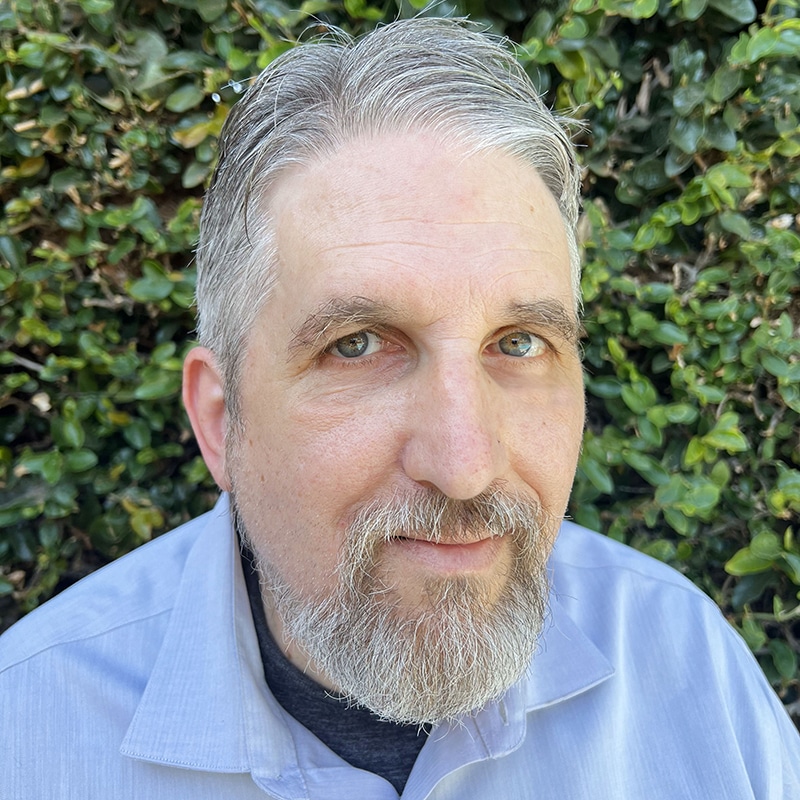



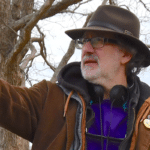
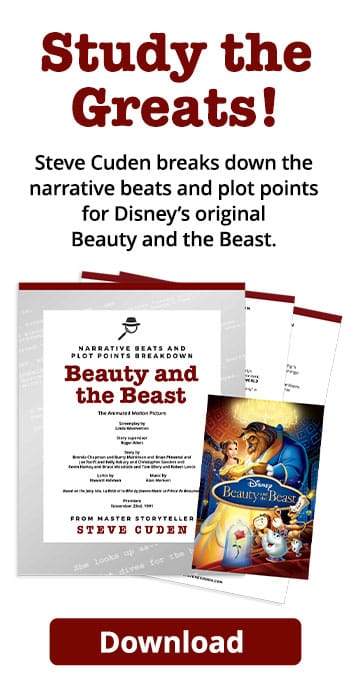



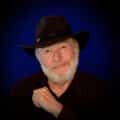
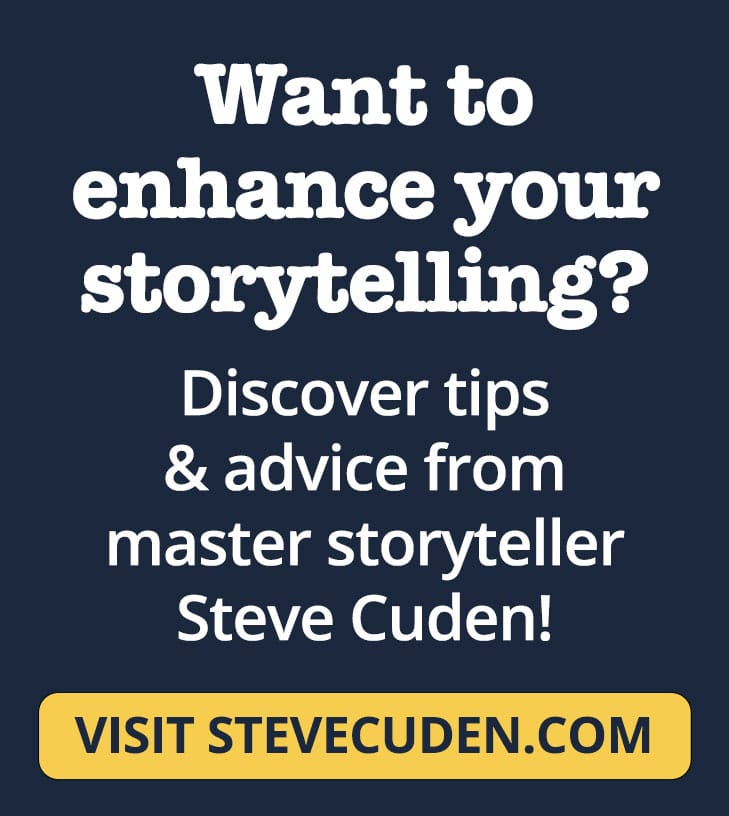
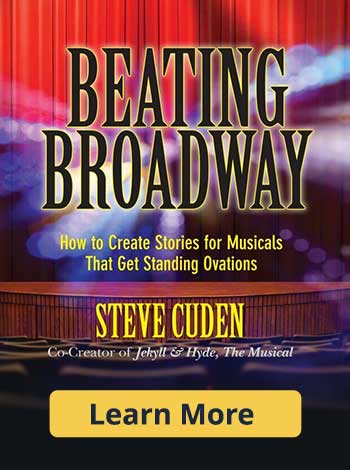
0 Comments